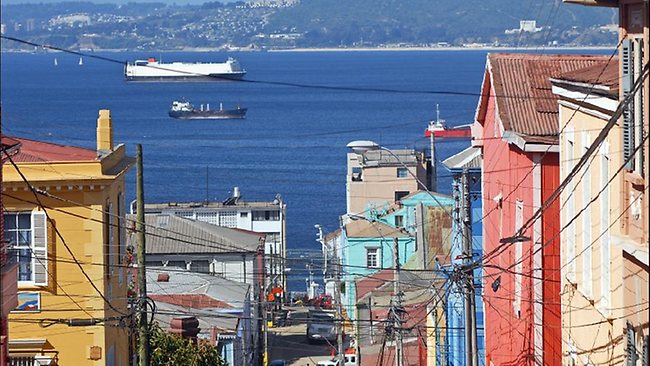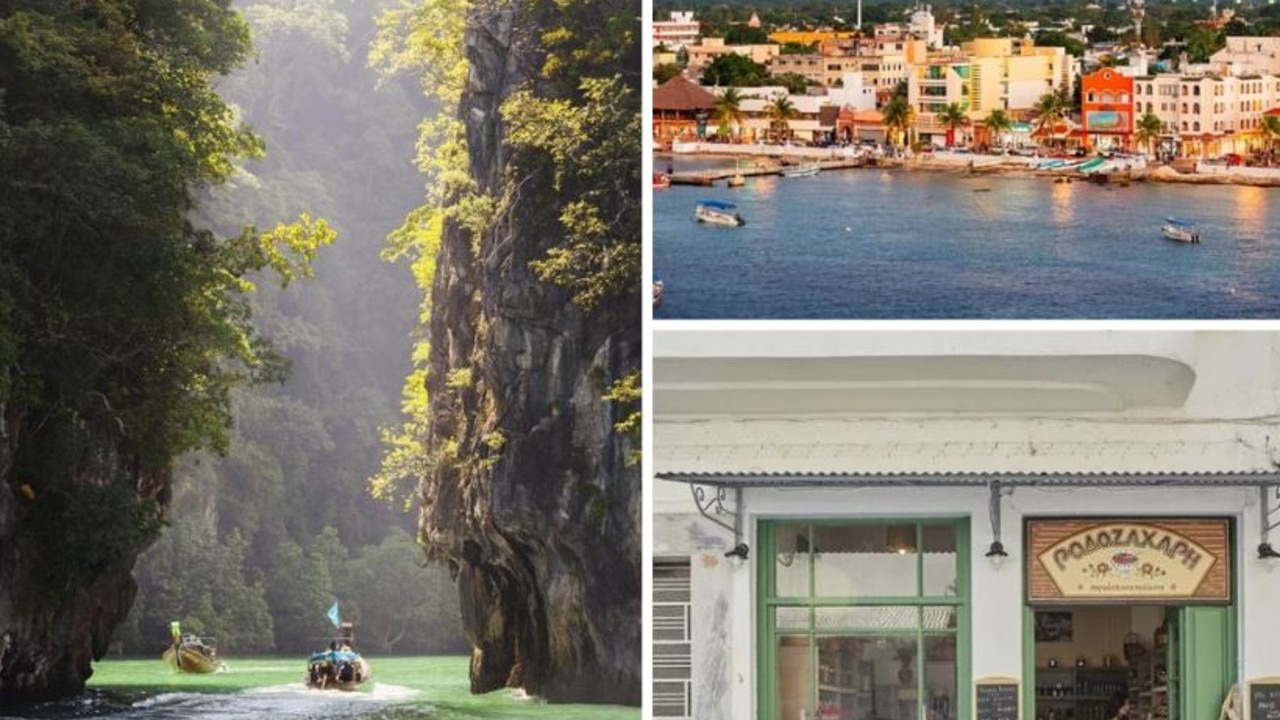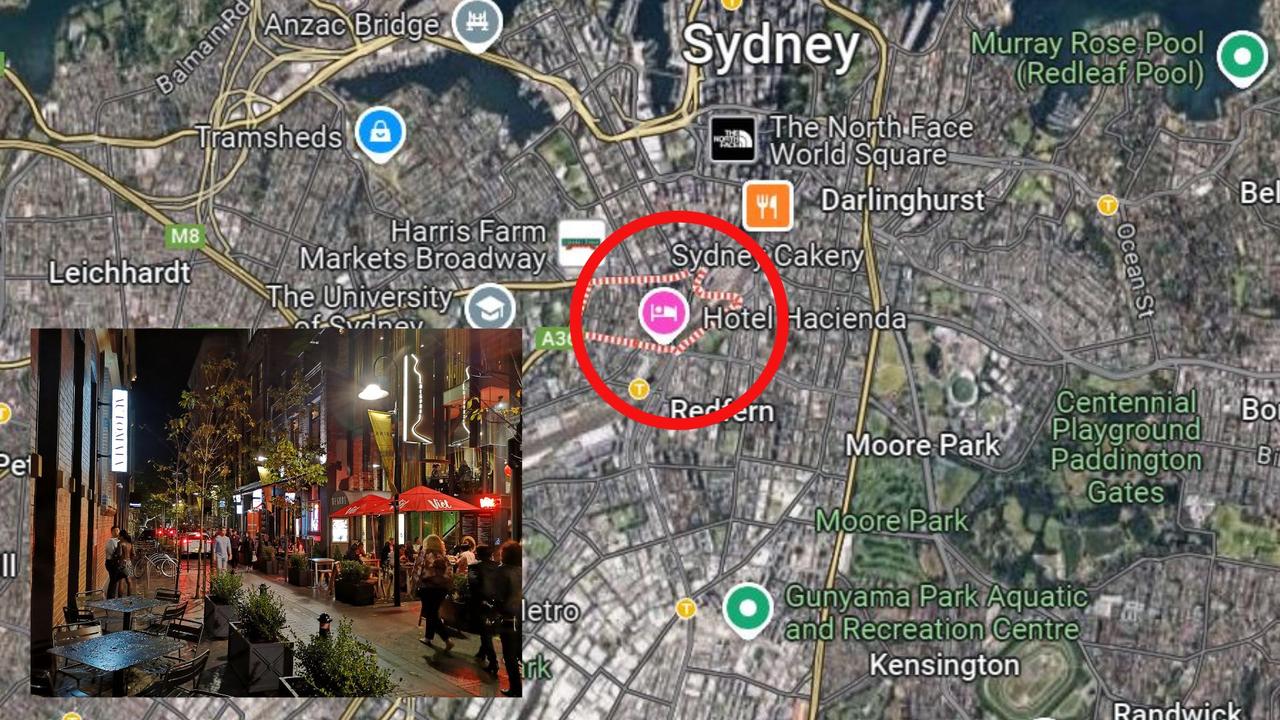Living on the edge in Valparaiso
THE little-known Chilean city has heaps of charm - and its resistance at slipping into the sea and succumbing to natural disaster is impressive, writes Craig Tansley.

TAKE care ordering food in a Valparaiso cafe - anything too heavy might be the straw that breaks the camel's back to send you hurtling down one of the town's 42 impossibly steep hills into the chilly Pacific.
It's that kind of place: a city where visitors with no interest in engineering take up a sudden, urgent interest in the field, wondering what on earth stops this delicate architectural masterpiece from tumbling into the sea. But it resists the temptation to slide into oblivion no matter what's thrown at it (earthquakes included). And so its restaurants, bars, boutique hotels and cafes remain like this - balancing gracefully, gripping steadfastly - offering up ocean views that seem to stretch halfway to Australia. Valparaiso is one of the most unusual cities in South America, but it has also been one of its best-kept secrets until recent years - strange, considering it's only 120km from Chile's capital, Santiago. It wasn't always this way. During its Golden Age in the years 1848 to 1914, Valparaiso became one of the most important shipping ports in the Pacific, earning itself the tag The Pearl Of The Pacific (and Little San Francisco). And so it became a magnet for immigrants from England, Italy, Germany and Switzerland, who imported their architecture and culture into separate hillside neighbourhoods. Valparaiso flourished, Latin America's oldest stock exchange was soon established, as was South America's first volunteer fire department, Chile's first public library and the oldest Spanish-language newspaper in continuous publication in the world. And so it became a magnet for immigrants from England, Italy, Germany and Switzerland, who imported their architecture and culture into separate hillside neighbourhoods. Valparaiso flourished, Latin America's oldest stock exchange was soon established, as was South America's first volunteer fire department, Chile's first public library and the oldest Spanish-language newspaper in continuous publication in the world. But when the Panama Canal was completed in 1914, Valparaiso was no longer required as a stopover for sailors between the Atlantic and Pacific. The town slipped into decline for 80 years or more. However, thanks to the efforts of proud residents, Valparaiso was slowly restored, earning a UNESCO World Heritage listing. I arrive in Valparaiso on a chilly winter morning as a wild westerly turns the harbour white with chop and gulls circle, screaming in protest. I can imagine history's great explorers departing in seas like this - Captain Cook stopped several times in Valparaiso, while Charles Darwin spent time here with a childhood friend. I escape the buffeting winds by taking refuge in tiny, noisy cafes, ducking my head just to get in the door. But Valparaiso has a split personality and so within the hour the wild weather subsides and a still, sunny calm brings residents out in T-shirts. Creaking funicular elevators, some of which have operated for 129 years (now one of the world's Top 100 most endangered historic treasures) take visitors up to Valparaiso's steepest suburbs for about 50. Travelling can be a lot like falling in love; sometimes it takes time and perseverance, other times instant attraction strikes. Valparaiso socked me in the nose. Rarely do I stand like this: open-mouthed, speechless, smitten. I see sun-kissed cafes where couples sip coffee and whisper sweet-nothings. The smell of jasmine, from 100 backyard gardens, pervades the air. There are colourful cafes where locals sit outside drinking wine and smoking cigars. Cafes, boutique hotels and restaurants are connected by narrow, cobbled laneways, between old walls coloured by eye-catching graffiti that showcases the town's artistic bent. Houses of corrugated iron and plaster provide more colour than a single set of eyes can process on a first visit, while balconies fashioned from centuries-old steel overflow with creeping bougainvillea and flowerpots. It's hard to believe people live here, balancing precariously in these old buildings; but look, there is their washing hanging out to dry. There are designer clothes stores that fit effortlessly into the labyrinth of laneways, and florists and old churches with magnificent steeples. An air of romanticism remains from Valparaiso's Golden Age - the souls of poets, artists and intellectuals must be lingering.At night, the city barely sleeps. As I hop from bar to bar, I pass houses with doors wide open where artists drink wine and paint as they listen to loud jazz. And in the mornings, while the city sleeps off its hangover, I get up early and watch Valparaiso come to life; taking breakfast long before other diners might upset the cafe's balance and send us for an early-morning swim in that big, blue ocean. -- Go2 - VALPARAISO - Getting there LAN Airlines flies from Sydney to Santiago in Chile in partnership with Qantas. See lan.com Buses leave from Santiago every 15 minutes from Terminal San Borja near Central Station, for about $7. - Staying there Hang out over the edge of Valparaiso at Hotel17. See hotel17.cl/eng/index2.html More: See chile.travel



